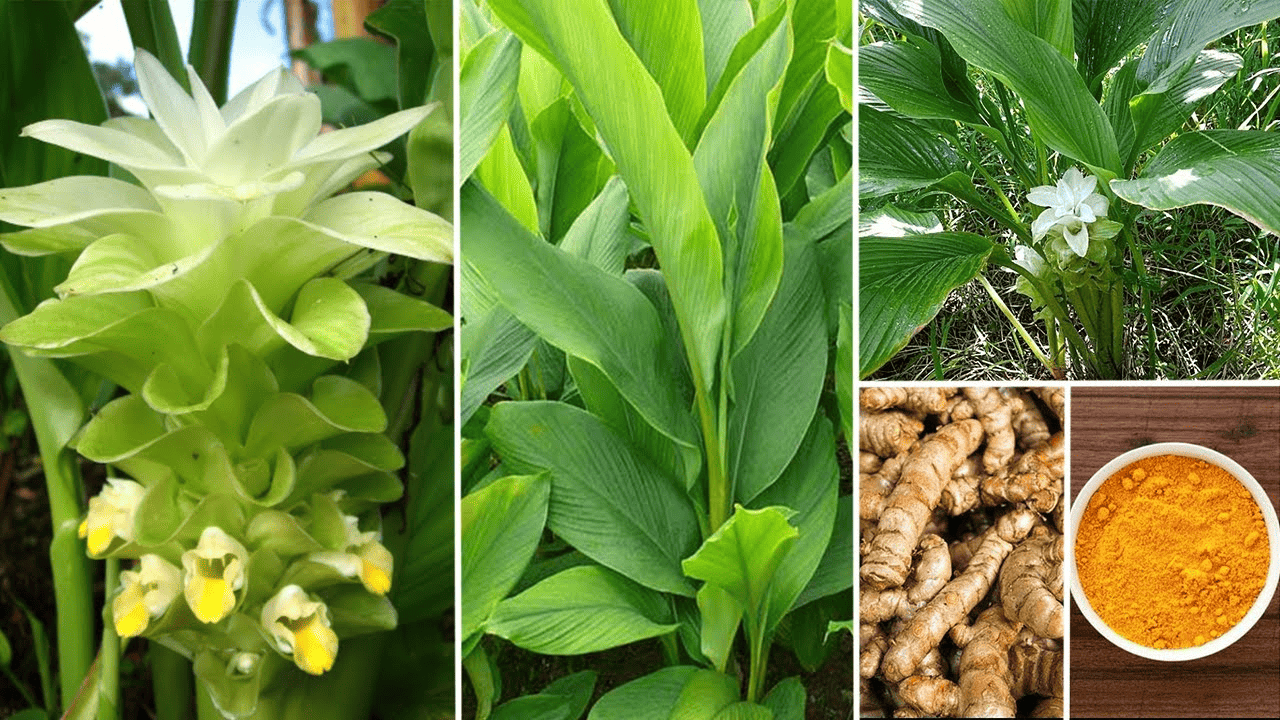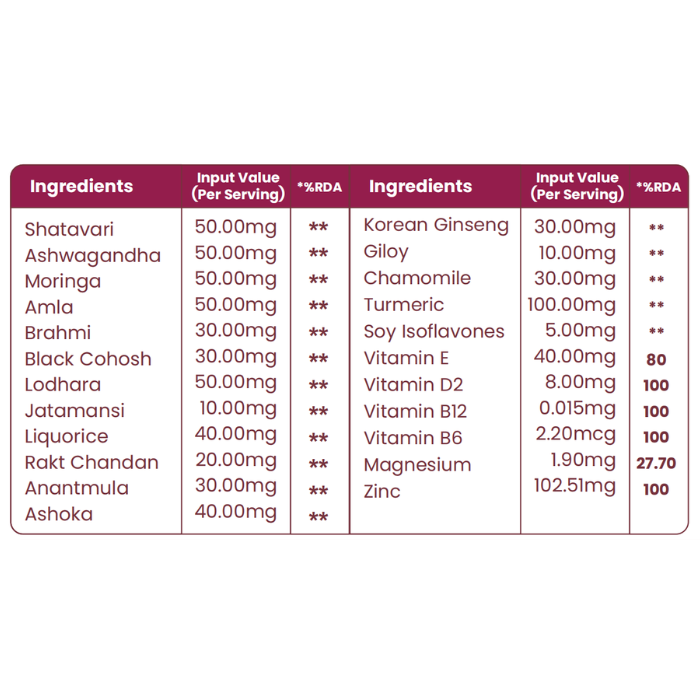Don't miss our holiday offer - up to 10% OFF!
Turmeric For Perimenopause: Guide to Natural Support

Perimenopause is a pivotal transition in a woman’s life, marking the years before menopause when ovarian hormone production begins to fluctuate. Commonly beginning in the early to mid-40s but sometimes as early as the mid-30s, this phase can last several years and is characterized by an array of physical, emotional, and cognitive symptoms.
In the pursuit of holistic wellbeing during this transformative time, Curcuma longa—commonly known as turmeric—emerges as a celebrated botanical with a long history in both culinary and traditional medicinal systems.
Curcuma longa is not just a spice; it is a plant with potent anti-inflammatory, antioxidant, hormone-modulating, and adaptogenic properties. Across Ayurveda, Traditional Chinese Medicine, and modern scientific literature, turmeric has earned recognition for its extensive benefits, many of which map closely to the challenges faced in perimenopause.
This comprehensive page explores why, how, and for whom Curcuma longa can offer gentle, effective support for perimenopausal health.
Understanding Perimenopause: A Landscape of Change
Perimenopause is driven by unpredictable changes in estrogen and progesterone. The result is a wide variation in symptoms that may include:
- Irregular periods (shorter, longer, skipped, heavy)
- Vasomotor symptoms like hot flashes and night sweats
- Mood swings, irritability, anxiety, and depression
- Sleep disturbances and fatigue
- Reduced libido and vaginal dryness
- Brain fog, memory lapses, and poor concentration
- Joint pain and worsening aches
- Increased risk of weight gain, bone loss, and metabolic changes
Layered on top of hormonal chaos are increased oxidative stress, inflammation, and shifting metabolic, cardiovascular, and immune dynamics. Taken together, these changes call for an integrative, system-wide approach—and that is where Curcuma longa shines.
Curcuma longa: Profile and Active Compounds
Curcuma longa is a perennial herbaceous plant, native to South Asia. Its rhizome—the underground stem—is what we commonly call turmeric. Within turmeric are numerous bioactive compounds, the most studied of which are:
- Curcuminoids (notably curcumin, demethoxycurcumin, bisdemethoxycurcumin)
- Volatile oils (turmerone, atlantone, zingiberene)
- Polysaccharides
Curcuminoids are responsible for the brilliant golden color and most of the health benefits, thanks to their powerful antioxidant and anti-inflammatory effects.
Key Actions of Curcuma longa in Perimenopause
1. Anti-Inflammatory Powerhouse
Perimenopause is characterized by increased inflammation—a result of declining estrogen, metabolic shifts, and oxidative stress. Curcumin, the key bioactive in turmeric, is a potent anti-inflammatory agent:
- Modulates nuclear factor-kappa B (NF-kB), a master regulator of inflammation in the body.
- Reduces levels of pro-inflammatory cytokines (like IL-6, TNF-α, and CRP).
- Eases joint pain, swelling, and muscle aches common in this phase.
By keeping inflammation in check, Curcuma longa can lessen pain, protect tissues, and improve overall comfort.
2. Antioxidant Defense and Cellular Protection
Oxidative stress contributes to many perimenopausal complaints—from “brain fog” and aging skin to fatigue and increased disease risk. Curcuminoids in turmeric:
- Neutralize free radicals—unstable molecules that damage cells and accelerate aging.
- Enhance the body’s own antioxidant enzymes (superoxide dismutase, catalase, glutathione peroxidase).
- Protect cellular DNA, lipids, and proteins, slowing down degenerative changes.
This antioxidant support helps maintain vitality across tissues—including brain, skin, and blood vessels.
3. Mood, Anxiety, and Emotional Balance
Fluctuating estrogen directly alters neurotransmitters like serotonin, dopamine, and GABA, often leading to mood swings, anxiety, and even depression. Curcuma longa supports emotional health by:
- Acting as a natural antidepressant, with clinical studies showing comparable effects to standard antidepressant drugs in mild to moderate depression.
- Enhancing serotonin and dopamine levels in the brain, fostering a greater sense of calm and well-being.
- Reducing inflammation in the brain, which is increasingly linked to mood disorders.
Turmeric’s mood-stabilizing effects are especially valuable for perimenopausal women susceptible to anxiety, irritability, and emotional turmoil.
4. Cognitive Clarity and Neuroprotection
Brain fog, poor memory, and difficulty concentrating are often lamented in perimenopause. Estrogen’s protective role in the brain wanes, while inflammation and oxidative stress rise. Turmeric may help by:
- Enhancing brain-derived neurotrophic factor (BDNF), which supports neuroplasticity, learning, and memory.
- Preventing oxidative damage to neurons—curcumin fights off the effects of aging and hormonal decline on the brain.
- Supporting better cognitive performance and sharper recall in both animal and human trials.
5. Bone Health and Osteoprotection
Estrogen decline accelerates bone loss, increasing osteoporosis risk. Curcuminoids support skeletal strength by:
- Inhibiting bone-resorbing cells (osteoclasts) while promoting bone-forming cells (osteoblasts).
- Reducing inflammation and oxidative stress in bone tissue—key drivers of bone density loss.
- Supporting vitamin D metabolism and improving calcium absorption.
Regular intake, combined with exercise and adequate calcium/vitamin D, helps protect bone structure.
6. Hormone Modulation and Female Wellness
Curcuma longa doesn’t act as a hormone but modulates hormone metabolism and receptor activity:
- Supports healthy clearance of excess estrogens via liver detox pathways.
- May help mitigate estrogen dominance symptoms by optimizing hormone breakdown.
- Alleviates menstrual irregularities and excessive bleeding when cycles are erratic (documented in both modern and traditional medicine).
Its mild uterine-toning and antispasmodic effects can soothe cramps and support menstrual comfort.
7. Cardiometabolic Health
Risks for cholesterol imbalances, hypertension, and weight gain rise during perimenopause. Turmeric assists by:
- Decreasing LDL (“bad”) cholesterol and triglyceride levels.
- Improving insulin sensitivity and balancing blood sugar.
- Reducing endothelial inflammation and supporting vascular function.
These actions support long-term heart and metabolic health.
8. Skin, Hair, and Detoxification Support
Women often notice hair thinning, skin changes, and dullness in perimenopause. Turmeric:
- Protects against collagen breakdown, preserving skin elasticity and hydration.
- Fights hyperpigmentation and age-related skin changes.
- Supports gentle liver detoxification, aiding hormonal and metabolic balance.
Scientific Evidence on Turmeric in Perimenopause
Clinical Trials and Human Studies
- Double-blind, placebo-controlled trials show that turmeric and curcumin supplements significantly reduce the frequency and severity of hot flashes, joint pain, and mood swings in perimenopausal women compared to placebo.
- Research demonstrates meaningful improvements in depression, anxiety, and sleep quality with curcumin supplementation.
- Studies on postmenopausal women reveal improvements in bone density, blood lipid profiles, and markers of chronic inflammation.
Mechanistic and Laboratory Insights
- Preclinical research confirms turmeric’s ability to reduce oxidative stress, balance hormones, and promote cyclical regularity in animal models of menopausal transition.
- Laboratory research supports turmeric’s role in down-regulating inflammatory pathways, protecting neurons, and modulating neurotransmitter production.
Practical Guidance: Using Curcuma longa for Perimenopausal Support
Forms and Dosages
- Powdered turmeric root: Used in food, teas, and smoothies. Combine with black pepper (which contains piperine) and healthy fats to enhance absorption.
- Standardized Curcumin Extracts: Available in capsules or tablets, typically standardized to 95% curcuminoids, often combined with piperine.
- Turmeric tinctures or drops: Useful for those who prefer liquid delivery.
Suggested dosage:
- Turmeric powder: 1–3g daily, used in cooking or mixed with warm milk.
- Standardized curcumin extract: 500–1000mg daily, in divided doses, with food and black pepper for best bioavailability.
Always start at the lower end and increase gradually as tolerated.
Tips for Best Results
- Consistency is crucial. Full benefits often appear after 4–8 weeks of regular use.
- Pair with other supportive herbs (e.g., ashwagandha for stress, shatavari for hormone balance) in an integrative regimen.
- Choose high-quality, third-party-tested products to avoid impurities.
Integrating Turmeric into Your Lifestyle
- Add turmeric to soups, stews, curries, lattes (“golden milk”), and salad dressings for daily support.
- Consider blending turmeric supplements with other lifestyle pillars—regular movement, stress reduction, balanced diet, and restorative sleep.
Safety, Side Effects, and Considerations
Curcuma longa is widely regarded as safe, especially when used as food. However:
- High-dose supplements may cause mild digestive upset, nausea, or diarrhea in sensitive individuals.
- Turmeric has mild blood-thinning properties; those on anticoagulant medications should consult a healthcare provider.
- Avoid high-dose turmeric in cases of gallstones, bile duct obstruction, or advanced liver disease without medical supervision.
- Pregnant or breastfeeding women should use culinary doses only, unless supervised by a health professional.
Frequently Asked Questions
Can Curcuma longa replace hormone therapy?
- Turmeric offers gentle support for mild to moderate symptoms and is ideal for those seeking a non-hormonal approach. For severe hot flashes, bone loss, or high cardiovascular risk, consult your doctor—turmeric may complement but not replace medical care.
How soon will I feel results?
- Most notice subtle benefits (less pain, better mood, improved digestion) in 2–4 weeks, with full effects on inflammation, mood, or cognition emerging after 8–12 weeks.
Can turmeric help with perimenopausal weight gain?
- Yes. By improving insulin sensitivity, reducing inflammation, and supporting metabolism, turmeric may indirectly help manage weight. Combine with healthy nutrition and exercise for the best outcome.
Is turmeric safe for long-term use?
- Turmeric as a spice is safe indefinitely. For high-dose extracts, take periodic breaks (every 3–6 months) and consult your provider, especially if you use medications or have chronic illness.
Table: Key Benefits of Curcuma longa in Perimenopause
| Symptom/Concern | Turmeric’s Contribution | Mechanism |
|---|---|---|
| Joint pain, aches | Decreases inflammation, pain | Inhibits pro-inflammatory cytokines |
| Hot flashes, night sweats | Reduces frequency, severity | Neurotransmitter modulation, anti-inflamm. |
| Mood swings, anxiety | Stabilizes mood, reduces anxiety | Balances serotonin, dopamine, GABA |
| Brain fog, memory lapses | Enhances cognition, recall | Neuroprotection, BDNF support |
| Bone density loss | Protects bone, slows loss | Inhibits resorption, reduces oxidative stress |
| Skin changes | Maintains elasticity, radiance | Antioxidant, collagen support |
| Weight gain, metabolic shifts | Supports healthy metabolism | Improves insulin sensitivity, lipid profile |
| Sleep disturbances | Indirect improvement via mood, pain | Anxiety reduction, pain relief |
Integrative Strategies: Maximizing Turmeric’s Benefits
To amplify Curcuma longa’s effectiveness, combine with:
- Nutrient-rich, anti-inflammatory diet: Fresh vegetables, fruits, lean protein, omega-3 fatty acids, and fiber.
- Regular exercise: Particularly weight-bearing and aerobic activity for bone, mood, and cardiovascular health.
- Stress management: Yoga, tai chi, meditation, or mindfulness enhance resilience and amplify adaptogenic effects.
- Sleep hygiene: Regular schedules and calming nighttime rituals for restorative rest.
- Social and emotional support: Build community, seek counseling if needed.
Turmeric is not a stand-alone miracle but a potent ally when paired with holistic self-care.
Conclusion
Curcuma longa stands out as a time-tested, evidence-backed botanical ally for women traversing the challenges of perimenopause. From soothing inflammation and easing mood swings to protecting bones, brightening skin, and restoring cognitive clarity, turmeric delivers multi-layered benefits for mind and body.
Its adaptogenic, hormone-modulating, antioxidant, and anti-inflammatory properties address the complex, interconnected web of symptoms and risks unique to perimenopause. By weaving turmeric into daily life—paired with mindful lifestyle strategies—women can transform this period of change into a chapter of vitality, renewal, and deeper self-understanding.
Always consult a qualified healthcare provider before beginning any new supplement, especially if you are on medication or have preexisting conditions. Perimenopause is a journey—one that can be empowered through the gifts of nature, tradition, and integrative self-care.











